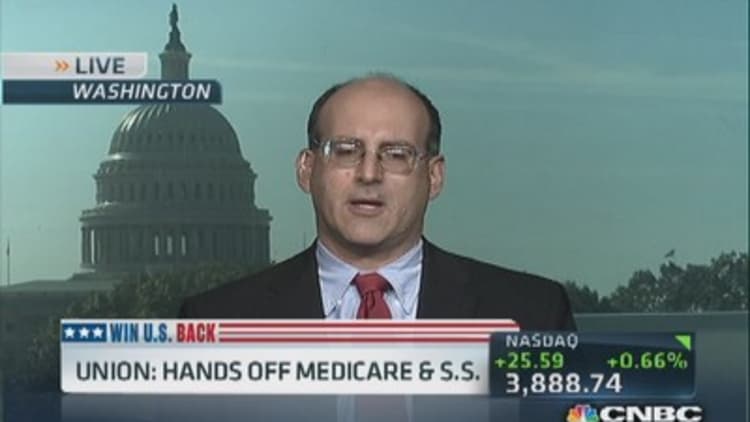Social Security benefits for nearly 58 million people will rise only 1.5 percent next year, among the smallest increase since automatic adjustments were adopted in 1975, the government announced Wednesday.
The cost-of-living adjustment, or COLA, is based on a government measure of inflation that was released Wednesday.
(Read more: Consumer prices mild in Sept, giving Fed free rein)
The increase was small because consumer prices, as measured by the government, haven't gone up much in the past year.
The COLA affects benefits for more than one-fifth of the country, including millions of disabled veterans, federal retirees and people who get Supplemental Security Income, the disability program for the poor.

Social Security pays the average retired worker $1,272 a month. A 1.5 percent raise would come to about $19.
In some years, part of that raise would be erased by an increase in Medicare Part B premiums, which are deducted automatically from Social Security payments. But Medicare announced Monday that Part B premiums, which cover doctor visits, will stay the same in 2014, at $104.90 a month for most seniors.
The COLA announcement had been scheduled for two weeks ago. It was delayed because the Bureau of Labor Statistics did not issue the inflation report for September during the partial government shutdown.
(Read more: Most Americans delay retirement plans)
Since 1975, annual Social Security raises have averaged 4.1 percent. Only six times have they been less than 2 percent, including three of the past five years. This year's increase was 1.7 percent. There was no COLA in 2010 or 2011 because inflation was too low.
By law, the cost-of-living adjustment is based on the consumer price index for urban wage earners and clerical workers, a broad measure of consumer prices generated by the Bureau of Labor Statistics. It measures price changes for food, housing, clothing, transportation, energy, medical care, recreation and education.
The COLA is calculated by comparing consumer prices in July, August and September each year to prices in the same three months from the previous year. If prices go up over the course of the year, benefits go up, starting with payments delivered in January.
(Read more: Retirement roulette is thenew American normal)
Gasoline prices are down 2.4 percent from a year ago, while food prices are up slightly, according to the August inflation report. Housing costs, meanwhile, went up 2.3 percent, and utilities increased by 3.2 percent.
Medical costs went up less than in previous years but still outpaced some other consumer prices, rising 2.5 percent.
—By The Associated Press.

